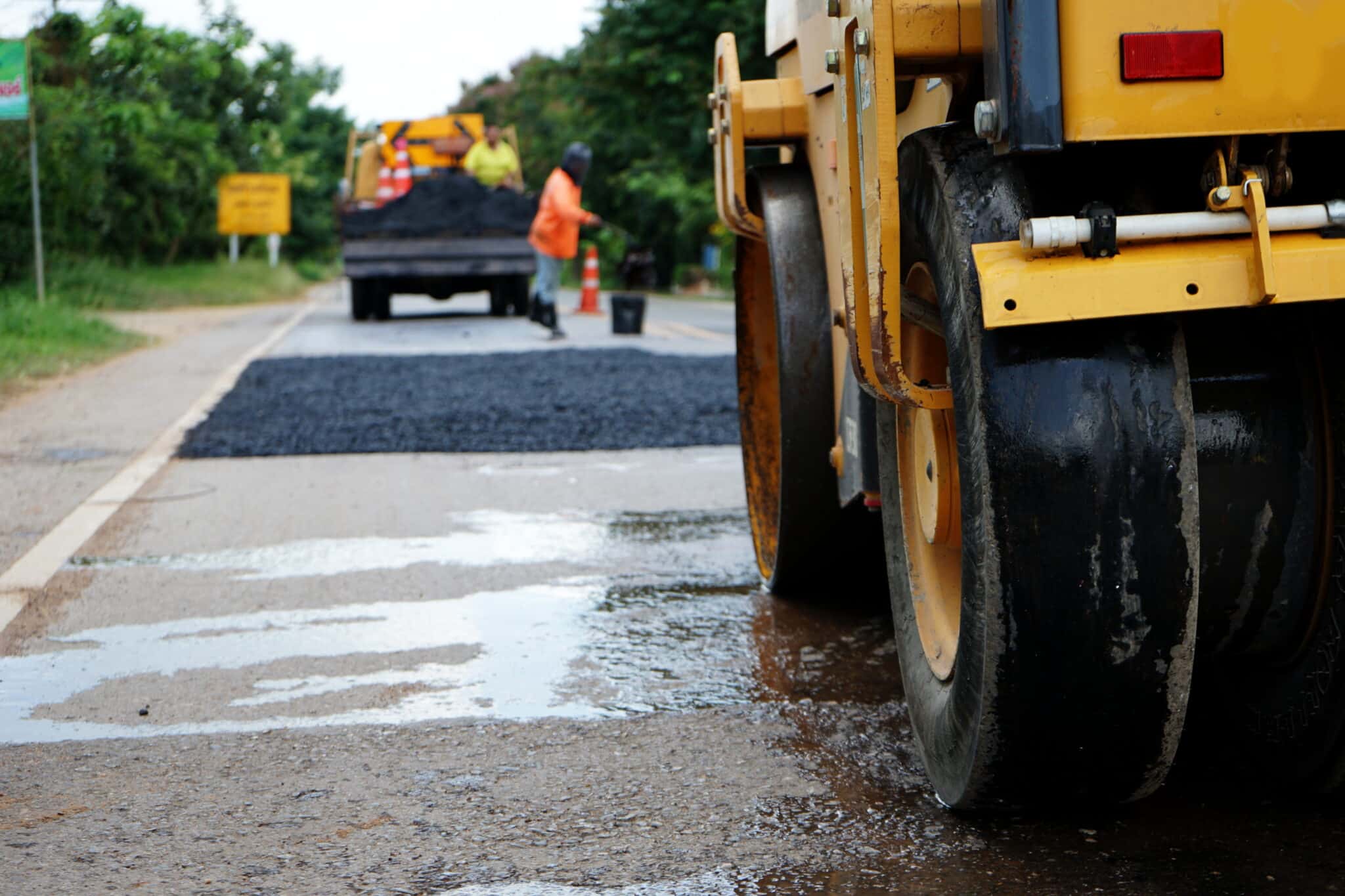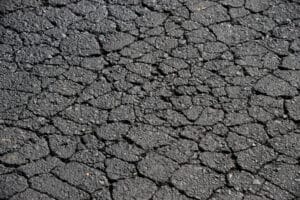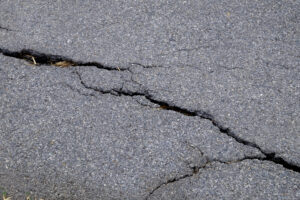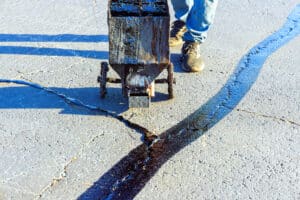When it comes to asphalt services, do you know the differences between crack sealing, overlays, replacement, resurfacing, and sealcoating? Many home and property owners don’t, leading to costly mistakes.
Below is a guide on the differences in asphalt service types, their processes, and best-use applications for each one.
A Guide to Asphalt Services
Asphalt maintenance and repairs are essential to keeping your asphalt surfaces safe, attractive, and durable.
The main forms of asphalt services are:
- asphalt crack sealing and filling
- asphalt overlays
- asphalt replacement
- asphalt resurfacing
- asphalt sealcoating
Below we’ll break down the differences between these asphalt services and which is best to improve your asphalt’s lifespan or condition.
What is asphalt resurfacing?
Asphalt resurfacing applies a new layer over the existing pavement’s surface. This service is an expensive option that can help to fill in small cracks and holes. But it won’t address more significant damage.
Asphalt resurfacing is the process of putting a new layer of asphalt over an existing one to:
- extend the life of an asphalt surface
- prevent further damage
- repair small to medium-sized cracks
Resurfacing can be done with either hot or cold asphalt, but it does involve some preparation before the new asphalt is laid down. Asphalt resurfacing differs from replacement because it is cheaper, quicker, and less work. Resurfacing is an excellent option if your old asphalt is in good condition but starting to show signs of age, such as cracks or a pothole.
Asphalt Resurfacing Process
Here is a step-by-step guide to the asphalt resurfacing process:
- Cleaning and inspection of the existing asphalt surface
- Loose materials are removed, and deep cracks are filled to prevent them from showing through in the new layer
- Depending on the condition, a fiber mat may be layered on top first to extend the lifespan before cracks underneath eventually come to the surface again
- A tack coat, or primer, is sprayed onto the old asphalt so that it will stick to the new layer
- Finally, a hot asphalt mix is laid down and compacted, usually to a thickness of two inches
Now that you know the asphalt resurfacing process, we’ll explain the best-use applications.
Asphalt Resurfacing Resolutions
Resurfacing asphalt is a great way to extend the life of your pavement, and it’s best done when the damage is still minor. If there are deep cracks, potholes, or significant undulations, replacement may be necessary. It’s also essential to resurface an asphalt surface before the vegetation grows in the cracks.
When to Resurface Asphalt
Resurfacing is usually recommended for asphalt, which has begun to show minor damage and aging but is still in good condition. The advantages of resurfacing are that it’s cheaper than replacement and doesn’t require as much preparation. It can also be done as a preventative measure to extend the lifespan of an existing surface.
Resurfacing is generally less expensive than driveway replacement, but it only lasts for a short time. Replacing requires more labor and time but will give you a brand-new driveway.
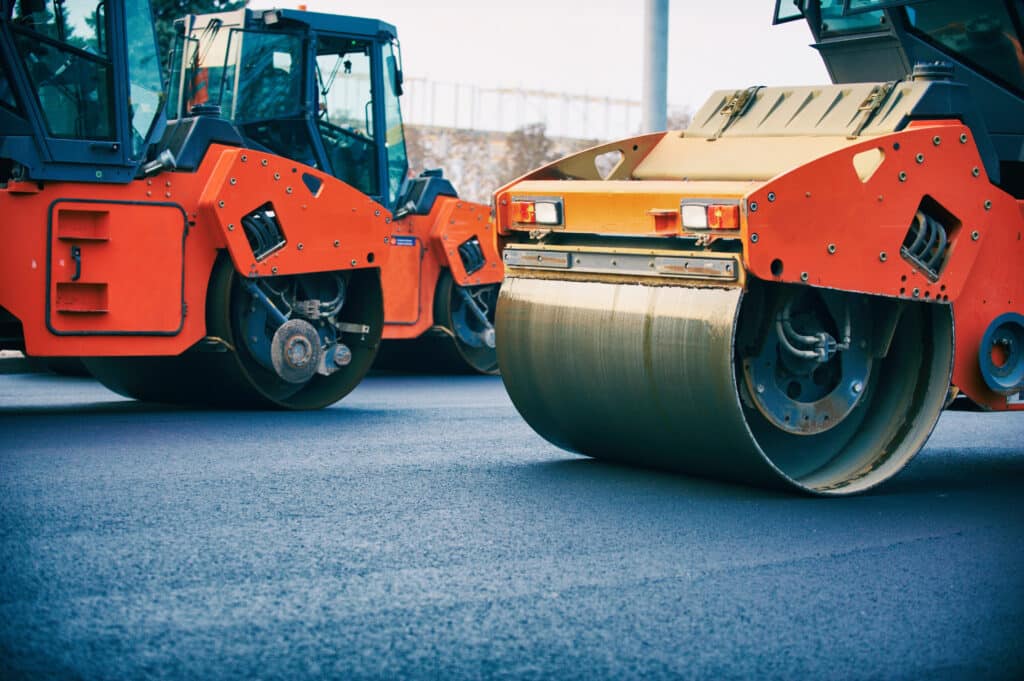
What is asphalt replacement?
Asphalt replacement removes the entire pavement and replaces it with new asphalt. This service is more costly, but it can be necessary if the damage is too significant to be repaired with resurfacing.
Some differences between asphalt replacement vs. resurfacing include:
- Replacement is more invasive than resurfacing
- Replacement costs more money than resurfacing
- Replacement is more time-consuming than resurfacing
Asphalt replacement is ideal if your existing driveway or parking lot is in poor condition or you want to increase your home’s value.
Asphalt Replacement Process
The replacement process begins with removing the existing asphalt. You can do this with a jackhammer or other heavy equipment. Once the asphalt is removed, the underlying base will be inspected and repaired. You can then add the new layer of asphalt.
Depending on the condition, edges are saw cut when old asphalt is removed to provide a uniform edge to the end product —this may add additional costs.
Asphalt Replacement Resolutions
Asphalt replacement is more expensive and time-consuming than resurfacing, but it will give you brand-new pavement. It’s an ideal choice if your existing driveway or parking lot is in poor condition or you want to increase your property’s value.
When to Replace Asphalt
Replacement may be the best option if your asphalt is severely cracked, pitted, or in poor condition. Asphalt replacement is more expensive and time-consuming than resurfacing, but it will give you a brand-new driveway. It’s a more extensive service, resulting in a brand-new, long-lasting driveway.
What is asphalt sealcoating?
Asphalt sealcoating is a thin waterproofing mixture of clay, sand, and other materials to protect the surface from weather and traffic wear. It protects the asphalt from damage caused by UV rays, rain, snow, and vehicle fluids, such as cracking and crumbling. It also restores the color of the asphalt and gives it a fresh, new appearance.
Asphalt Sealcoating Process
Here is a step-by-step guide to the asphalt sealcoating process:
- Pavement is cleaned of dirt, debris, and stones
- Minor repairs are done (filling small potholes and hairline cracks)
- Sealcoating material is applied and takes 24 hours to dry (untouched)
Asphalt sealcoating can usually be completed in one day and doesn’t need as much labor as a replacement.
Asphalt Sealcoating Resolutions
Asphalt sealcoating doesn’t cure extensive damage, such as large cracks or potholes. When applied, it can only fill minor hairline cracks to give your asphalt a fresh look. As mentioned, sealcoating is best used as a routine maintenance treatment and to help increase curb appeal. Best of all, sealcoating is a relatively easy and inexpensive process worth the return on investment from higher costs resulting from more extensive asphalt damages.
When to Sealcoat Asphalt
Asphalt sealcoating is best as a preventative maintenance service every 3-5 years, depending on how much traffic the asphalt gets. For newly installed asphalt, sealcoating should be serviced between 6 months to 1 year for proper curing — then it can shift to standard 3–5 year routine maintenance. Additionally, if your cracks between hairline to 1/8th inch wide, sealcoating can help fill them.
The most important takeaway is that this service is best to help prevent damage from forming in the first place while smoothing your asphalt slightly more. Asphalt sealcoating is a great way to extend the life of your concrete driveway, improve its appearance, and fill minor cracks.
What is asphalt crack sealing?
Crack sealing protects and seals asphalt cracks and small gaps against water and debris to prolong its lifespan for years. It’s a technique to prevent water from entering cracks, leading to larger potholes. The materials are made of hot rubber to seal cracks while being flexible to pavement movement.
Asphalt Crack Sealing vs. Sealcoating What’s the Difference?
While sealcoating and crack sealing both “seal” asphalt, they’re two different types of asphalt services. So, what’s the difference between asphalt crack sealing vs. sealcoating? Sealcoating can fill hairline cracks (but not its main purpose), while crack sealing can fill larger ones (but not too significant).
Asphalt Crack Sealing vs. Crack Filling: What’s the Difference?
Regarding crack filling, this service also applies asphalt emulsion to prevent water from entering and to strengthen the adjacent pavement — but for non-active/dormant cracks. The main difference is that crack sealing only treats active cracks, while crack filling doesn’t. Crack filling is a temporary solution that may last a few seasons, while crack sealing can last for years.
Asphalt Crack Sealing Process
Here is a step-by-step guide to the asphalt crack sealing process:
- Hot, rubberized material is applied to the prepared cracks
- The hot material bonds to the surrounding asphalt and seals the entire crack depth
Below we’ll explain when it’s best to crack seal asphalt.
Asphalt Crack Sealing Resolutions
Parking lot and driveway cracks between 1/8th and 1.5 inches should be crack sealed. Larger damage, like alligator cracks, may require more intense asphalt repairs or replacement.
When to Crack Seal Asphalt
Asphalt crack sealing should be serviced every 18 months to 2 years, depending on traffic volume. This service should also be done before winter or risk surface cracks that can morph into potholes.
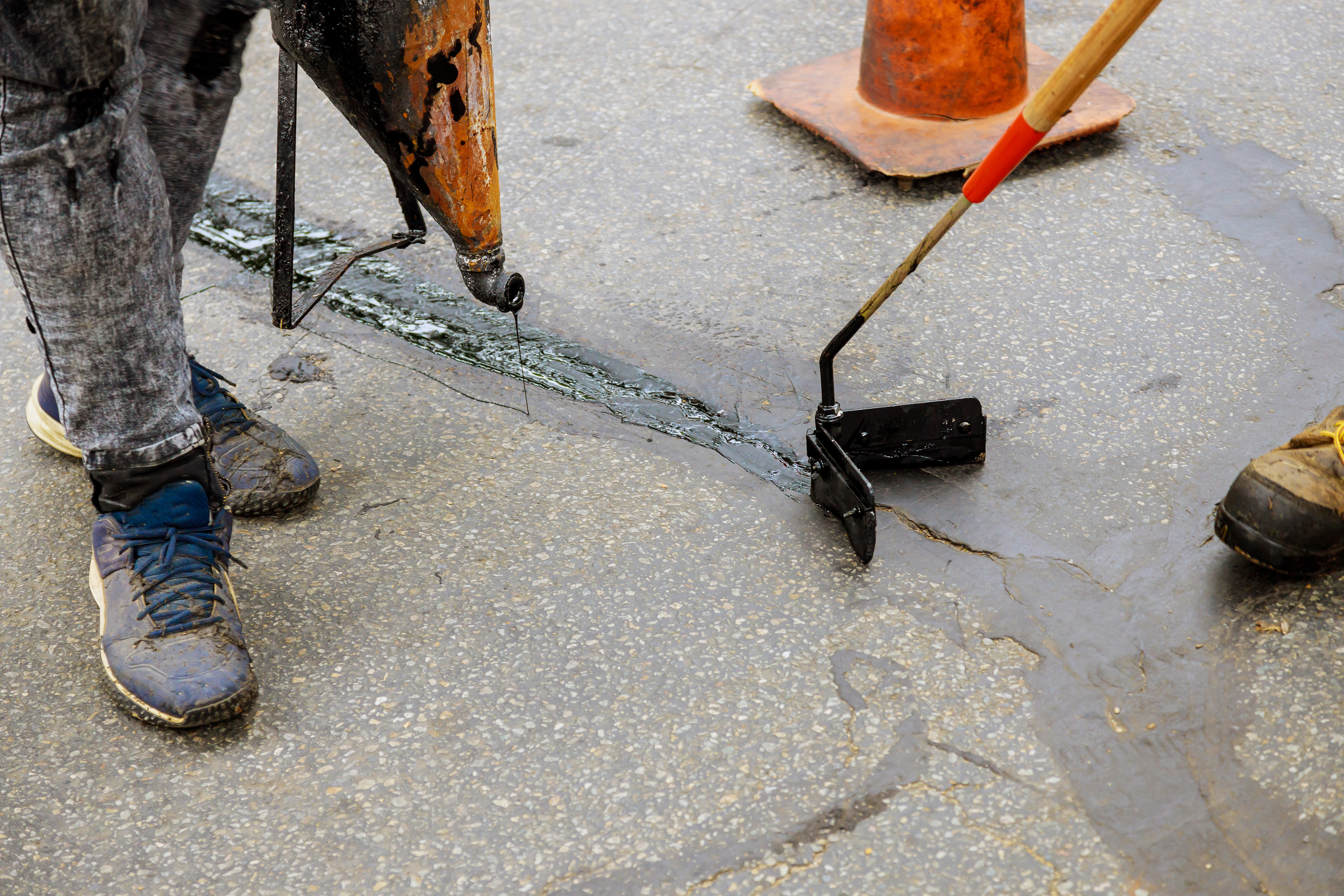
What is an asphalt overlay?
An asphalt overlay applies a new, thin layer onto an existing service. This asphalt service repairs damage or gives the asphalt a new surface. It’s thinner than conventional asphalt paving for low-traffic areas that don’t require thicker or more durable asphalt layers.
This treatment is less expensive than other asphalt services and can be completed quicker. They’re typically the preferred asphalt maintenance option for home and property owners because of the simple process and easy return on investment it provides.
Asphalt Overlay Process
Here is a step-by-step guide to the asphalt overlay process:
- Clean the existing surface— remove all dirt, debris, and vegetation so that the new asphalt will have a clean surface to adhere to
- Layer on a tack coat to act as a binding agent for the overlay
- Once the surface is prepped, the overlay is applied onto the tack coat layer
Now that you know the asphalt overlay process, we’ll explain the best-use applications and when it’s best to use this service.
Asphalt Overlay Resolutions
Asphalt overlays are best used on driveways or low-traffic residential streets that can withstand having a thin layer. Heavy-traffic areas with trucks wouldn’t benefit from asphalt overlays as they require a thicker layer to support them and prevent damage.
When to Overlay Asphalt
Asphalt overlays on surfaces that are in condition and well-maintained can last between 8-15 years. As with any asphalt surface, it will degrade over time. The best time to get an asphalt overlay is when there are deterioration signs such as cracks, potholes, and slow drainage before it becomes too severe.
Contact Superior Asphalt for Asphalt Services Today
Well-maintained asphalt can last up to 20 years. Still need help deciding which type of asphalt service is best for your home or property?
Contact us today for a free consultation! Our team of experts will help you determine which asphalt service is the best solution for your property’s needs.
Related Articles:

